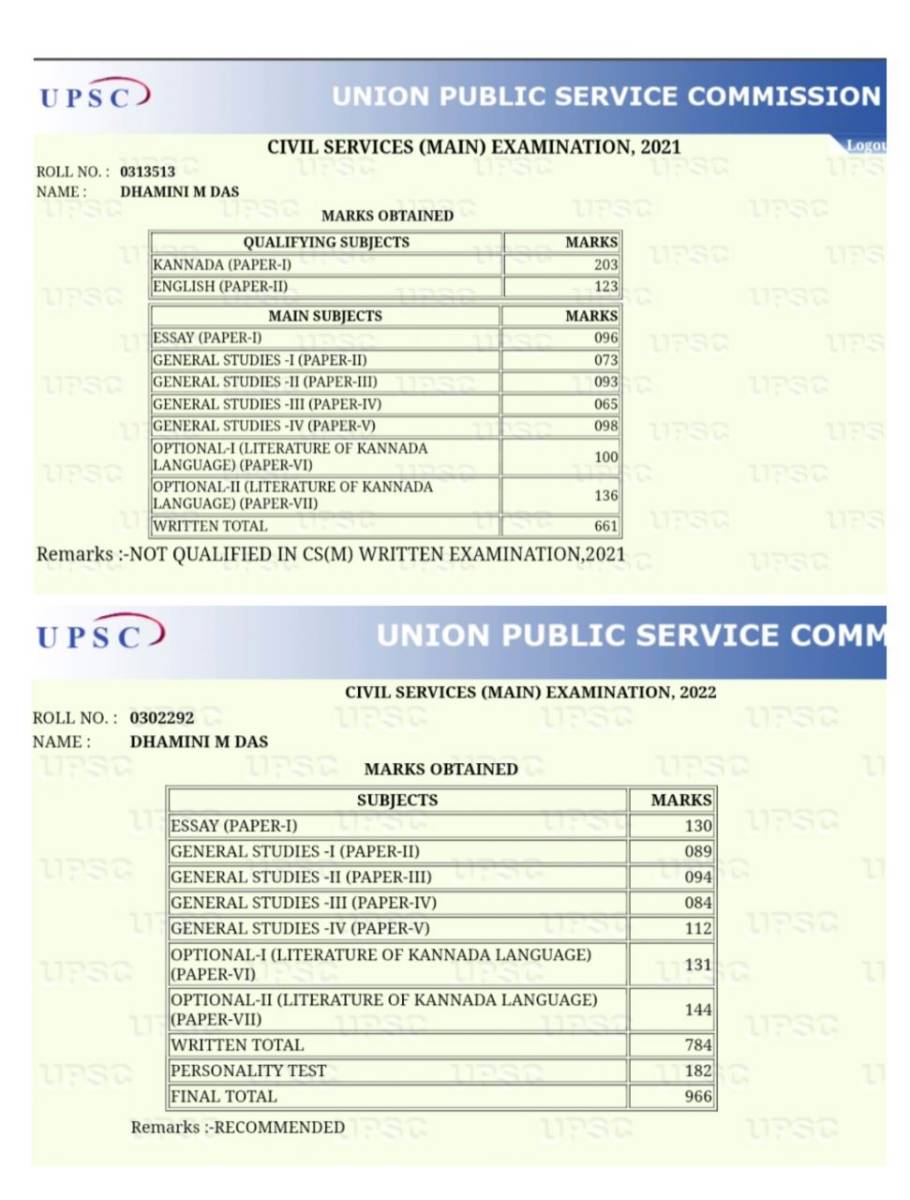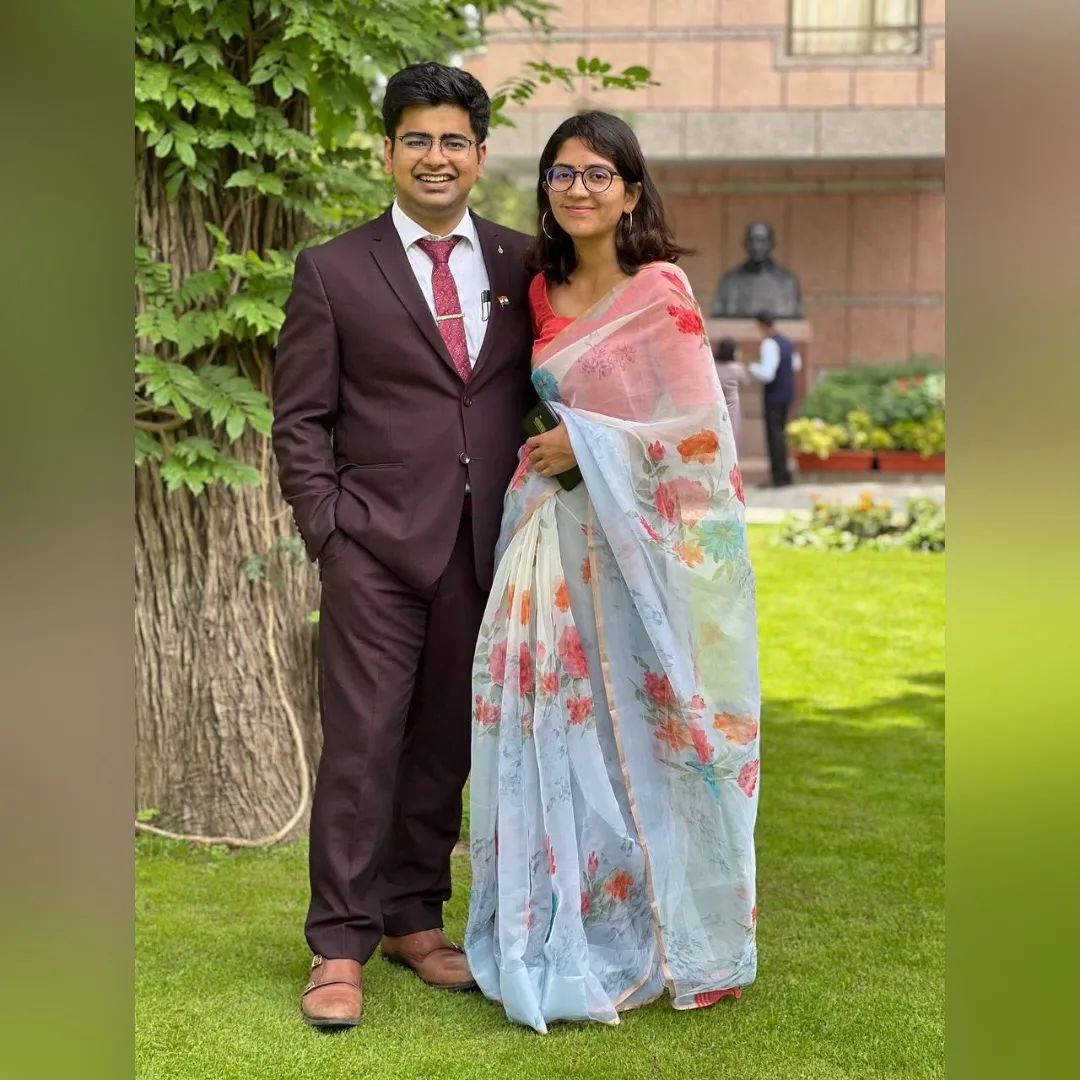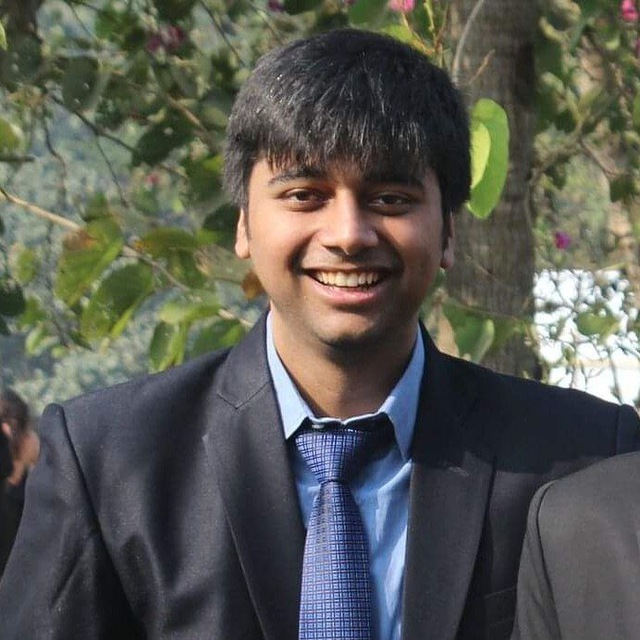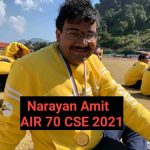Hi,
I am Dhamini M Das, All India Rank 345, who was student of Insights IAS OGP 2021. I would like to share my detailed strategy with you.
Details of UPSC journey:
Attempts: 2
First attempt: Cleared prelims and scored 660 in Mains (Very less).
Second Attempt: Got 345 rank.
Optional: Kannada Literature.
Prelims Strategy:
Sources:
1. Ancient and medieval India – Insights Class notes (Farees sir) + NCERTs – Our Pasts 1&2, Themes 1&2
2. Art and culture – Insights Class notes (Yashaswi sir) + made maps to remember folk dances, music, theater, etc.
3. Modern India – Spectrum + Insights Class notes (Pradeep sir) + made maps to remember organisations, leaders, newspapers, etc.
4. Geography – Insights Class notes (Sudeep sir) + NCERTs of 9th, 10th, 11th (India Physical environment and Fundamentals of Physical Geography) and 12th (India people and economy) + G.C. Leong.
5. Polity – Laxmikanth
6. IR – newspaper
7. Economics – Mrunal sir’s classes and handouts.
8. Science and Tech – NCERTs – 6th to 10th + newspaper
9. Environment – NCERTs – 11th std Chem (Ch14), 12th Chem (Ch 16), 12th Book (Ch 8 to 16) + Shankar IAS book
10. Current Affairs – The Hindu newspaper (did not make notes out if it) + Insights daily current affairs (didn’t make notes or didn’t re read from monthly magazine)
11. Test series – Insights IAS subject wise and textbook wise + Vision IAS test series
Strategy:
1. Made notes while attending classes for most subjects. After the day’s class read the source book (mentioned above) and made notes out of it.
I didn’t make notes from Laxmikanth and Spectrum, instead I added any new points for value addition in the book itself by writing it in the margins. Would underline important points (during 3rd or 4th reading) for faster revision.
2. Before starting revision of any subject, I would take a look at the last 10 years to get an estimate of what kind of questions come and which topics are important.
3. Similarly, after revision of the subject, I would go through the PYQs again, to test myself.
4. I attended around 115 prelims tests (30 Full Length + 85 subject wise and textbook wise) before by first prelims. Owing to this I was able to clear prelims.
5. My primary focus in prelims was on static since I found Current affairs quite challenging and the cost benefit ration isn’t very high. Also, a major chunk of prelims questions are from Polity and Economy, hence I focused more on these two subjects for prelims.
6. I feel understanding the concepts and applying logic is more important than learning multiple facts. (Doesn’t mean facts should be ignored, some facts like chronology of major events during independence struggle, major leaders and organisations are important, but care should be taken not to overdo it).
Mains:
Sources:
GS1:
1. Art and Culture – Insights Class notes (Yashaswi sir) (same notes as used for prelims)
2. World History – Rushikesh Reddy sir’s notes (UPSC CSE 2019 AIR 95)
3. Post Independence India – Nithin Sanghwan notes
4. Modern India – Spectrum
5. Society – made notes from Vision Value added material
6. Geography – NCERTs + class notes (same as notes used for prelims)
6.a. Industries – Rishikesh Reddy sir’s notes + Mrunal sir’s website.
GS2:
1. Polity and Constitution – Laxmikanth
2. Governance – made notes out of Vision Value added material
3. Social Justice – made notes out of Vision Value added material
4. IR – made notes out of Vision Mains 365
GS3:
1. Economy – Mrunal sir’s handouts
2. Agriculture – Insights APEC class notes (Tanmay sir) + Mrunal sir’s handouts
3. Science and Tech – made notes from Mains 365
4. Environment – made notes from Mains 365
5. Security – made notes from Mains 365
6. Disaster Management – Insights class notes (Sudeep sir) + made notes from Vision VAM and from NDMA guidelines
GS4:
1. Made notes from Arihant GS4 book by Atul Garg
2. Case study and ethical concepts discussion with Farees sir and discussion group.
GS Strategy:
1. In my second attempt I focused on completing the entire syllabus since that was the main drawback during my first attempt.
2. PYQs and syllabus should be the primary source of guidance, I answered the PYQs multiple times for answer writing practice.
3. Also referred to topper’s answer copies (Shruthi Sharma ma’am, Shubham Kumar sir, etc) to get to know how to structure and present my answers.
4. Mains test series – had them evaluated by Farees sir and worked on the feedback that sir gave. (Shortening the points, adding more examples, etc)
Essay Strategy:
1. Would write one essay every week and get it evaluated by Farees sir and would work on the improvements sir pointed out. Did this for over a year till my first mains.
2. During my second mains, Farees sir would pick abstract philosophical topics similar to that of UPSC, and around 7 of us would write these essays and sir would discuss all our essays and give personalised feedbacks.
3. Small approachable improvements that sir mentioned, helped me gradually improve the quality of my essays and score a good score of 130.
Optional – Kannada Literature:
Sources:
Paper 1 Section A:
1. Bhaasha shastra – Insights class notes
2. Samanyarige Sahithya charitre – Champu kavigalu
3. Samanyarige Sahithya charitre – Vachana Sahithya
4. Samanyarige Sahithya charitre – Keerthanegalu
5. Samanyarige Sahithya charitre – Shatpadi Sahithya
6. Samanyarige Sahithya charitre – Hosagannada Sahithya
7. Samagra Sahithya part 1 by GSS
Paper 1 Section B
1. Meemamse notes by Venkateshappa sir
2. Vimarshe – insights class notes
3. Samskruthika Charitre – Karnataka Samskruthika Charitre by Vijaykumar HDM
Paper 2 Section A
1. Vaddaradhane Xerox
2. Pampa bharata – Xerox or 12th and 13th aashwasa with Upodhghata
3. Kumaravyasa bharata – Karna parva Xerox with thorana nandi by Kuvempu
4. Nambiyannana ragale by Thi Nam Shree
5. Kammata Keeli by malleshayya
6. Janapriya kanaka samputa Xerox
7. Bharatesha Vaibhav Xerox
Paper 2 Section B
1. Hosagannada Kavithe by G H Nayak
2. Kannada Sanna Kathegalu G H Nayak
3. Bettada Jeeva – Shivaram Karanth
4. Madhavi – Anupama Niranjana
5. Odalala – Devanuru Mahadeva
6. Shudra Tapaswi – Kuvempu
7. Tughlaq – Girish Karnad
8. Devaru – A N Murthy Rao
9. Janapada Swaroopa – H M Nayak
10. Janapada Geetanjali – De Ja Gou
11. Kannada Janapada Kathegalu – J S Paramashiviah
12. Beedi Makkalu beledo – Kalegowda Nagavara
13. Savirada Ogatugalu – S G Imrapura
Strategy
1. Attended Kannada optional coaching and tests at Insights IAS by Pradeep sir and Ganesh sir, which was very helpful, especially for halegannada and nadugannada.
2. Would write at least one Kannada answer everyday to PYQs, this helped me with my speed as well as better articulation.
3. Attended test series conducted by Venkateshappa sir which covers the entire syllabus holistically. Found it very helpful. Sir also helped me with topics that I was particularly weak in, like Samskruthika Charitre by giving separate books for the same.
4. Also, I prepared model answers for all the PYQs and used them for revision.
Interview Strategy:
1. Prepared notes on every point in the DAF.
2. One on one mocks with Vinay sir were a true confidence booster. Vinay sir helps us think more rather than test random factual content.
3. Farees sir conducted multiple group discussions and mocks to help us articulate our thoughts into words.
4. Daily discussions with my friends Sreekanth and Gouri helped me stay updated with current affairs and refine my answering.
5. Unlike Vinay sir, some coaching centers focus more on random factual knowledge. At one such coaching centre, one person had told me that I have no brains and that I have no knowledge at all. After I cleared, the same person approached me for doing a talk with him.
6. I was very much affected by it and after that giving mock with Vinay sir and Khan sir helped me regain my confidence.
7. I got Chaubey sir board and got a good score of 182.
Ultimately personality test matters on whether or not can communicate our ideas in a simple way, stay humble and accept when we don’t know something. It’s not necessary to answer every single question, you can tell I don’t know to the questions you don’t.
As the famous quote goes “”Success has many fathers, but failure is an orphan”, many institutes have started to claim my rank for just giving a mock interview with them. In my Journey, InsightsIAS OGP programme has been a true companion and I am grateful for all the help I received from Vinay sir, my mentor Farees sir and faculties of InsightsIAS.
All the best!
Regards,
Dhamini M Das
AIR 345


![Ancient Indian History Notes for UPSC [All Parts] IMG_20210719_185812](https://iasbio.com/wp-content/uploads/2021/07/IMG_20210719_185812.png)














